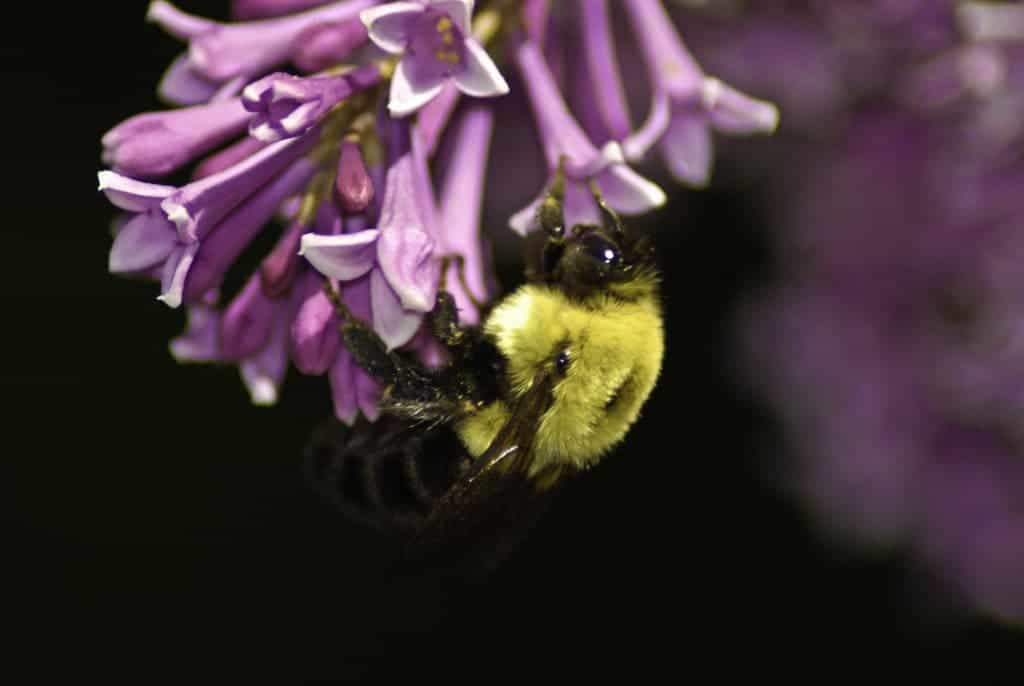Following an appeal by the agrochemical company Bayer, the European Union’s highest court has now confirmed a partial ban on three neonicotinoid pesticides linked to harming bees, preventing their use on certain crops.
The EU’s Commission had banned the pesticides in 2018 but this couldn’t be enforced due to Bayer’s appeal until now.

The products in question (imidacloprid, clothianidin, and thiamethoxam) belong to a class of pesticides known as neonicotinoids, which are chemically similar to nicotine and target insects. They have come under fire for contributing to the decline of bees by disrupting their sense of orientation, memory, and mode of reproduction.
Neonicotinoids are used to coat seeds to protect them when they are sown — they’re essentially nerve agents meant to keep pests at bay. When the seed germinates, it spreads the pesticide throughout the plant, protecting it entirely from pests. But the substance also spreads through the rest of the plant, through the pollen and nectar, where it can be absorbed by unfortunate pollinators.
In 2013, the EU Commission severely restricted the use of these three neonicotinoids to protect honeybees, whose populations have been plummeting around the world. Despite the ban, countries found a loophole, issuing more than 200 emergency authorizations for the use of these pesticides between 2013 and 2019, an EU report showed last year.
But the loophole wasn’t enough for Bayer, which decided to file a full appeal against the EU’s ban.
The company argued the decision could have “far-reaching consequences” for the certainty and predictability of active substance approvals in the EU. It also said there was insufficient new scientific knowledge to justify the restrictions — something which many researchers would disagree with.
Apparently, the Court of Justice of the EU also disagreed. It confirmed that the Commission was within its rights to ban the use of neonicotinoids on bee-attractive crops and that, in case of uncertainty, it is also entitled to make such restrictions.
“It must be held that the arguments put forward by Bayer cannot, in any event, succeed,” the court ruling said.
Bayer was not happy with the news. A representative for Bayer told EURACTIV that the company is “disappointed that the merits of this case weren’t recognized by the court,” but claiming Bayer respects the European legislative process and accepts the decision. With the appeal, the company wanted the EU to re-consider some EU’s crop protection law interpretations.
Bayer reiterated that it stood by the safety of its products, claiming these have been approved by regulatory bodies worldwide and highlighting the “value that these products have for farmers in managing pests effectively”. The company will continue offering these pesticides in all other regions, now with the exception of the EU.
Meanwhile, Pesticide Action Network (PAN) Europe, one of the campaign groups that presented arguments to the court in defense of the ban, told EURACTIV that the ruling could accelerate the ban of other toxic pesticides in the bloc. Now, in case of doubts about a pesticide’s toxicity, the EU Commission could simply ban it, the group said. Other areas could also use the EU ruling as a stepping stone for their own bans.
Greenpeace EU legal strategist Andrea Carta said in a press statement that the ruling “reaffirmed that protecting nature and people’s health takes precedence over the narrow economic interests of powerful multinationals.” The ruling means that the EU has to ensure the safety of all pesticides, GM crops, and chemicals, she added.
Reviewing over 1,500 studies on the issue, a group of European researchers confirmed in a 2018 study that neonicotinoids pose a danger to wild bees and managed honey bees. The report found most of the damage doesn’t necessarily come through the nectar and pollen directly, but rather through secondary soil and water contamination.









